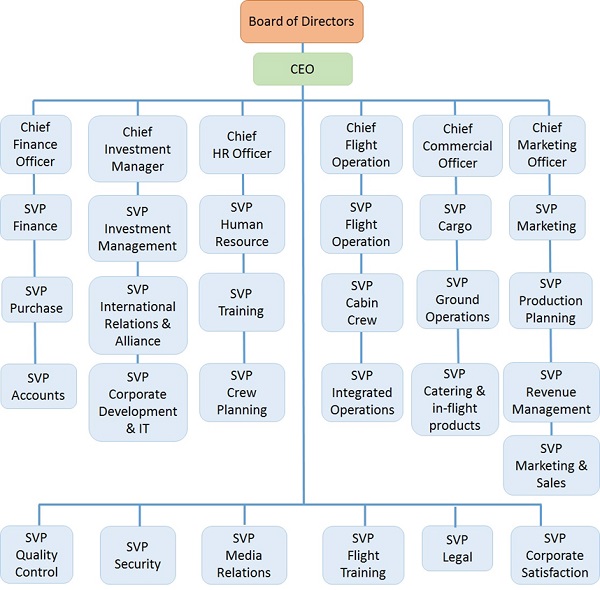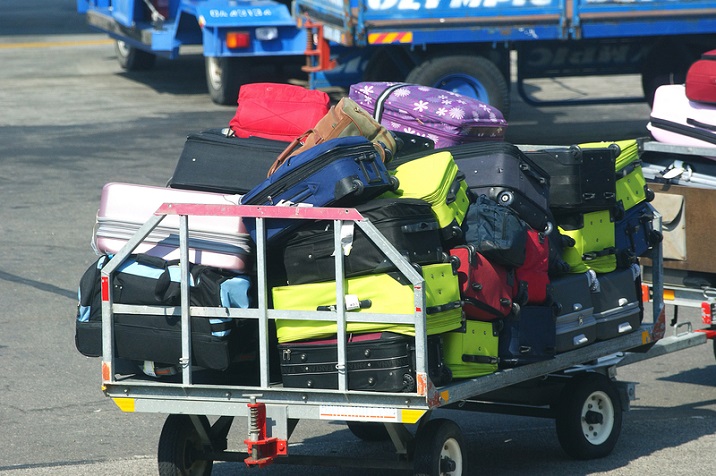Airline includes its equipment, routes, operating personnel, and their management. Airline provides a regular service of air transport on various routes. It is responsible for booking the tickets for the prospective passengers, taking care of the passengers and their luggage during transit, and transporting them safely to their destination. As the types of duties required to be done are multifold, the airline business is always working round the clock.
What is an Airline?
An organization that owns and operates many aircrafts, which are used for carrying passengers and cargo to different places.
The world’s first airline named DELAG established on 16th November, 1909. An airline business can be of various sizes and the ownership also varies. For example, it can be privately owned, jointly owned, or publicly owned. It also can be as small as a Domestic or as large as an International airline.
Major Airlines in India
The following are the major Indian airline players in the aviation industry −
- Public Sector Units (PSUs) − Air India and Pawan Hans.
- Airlines listed on stock exchange − SpiceJet, IndiGo, and Jet Airways.
- Private Airlines − GoAir, Air Asia, Vistara
Types of Carriers
There are two types of airline carriers −
- Low Cost Carrier (LCC)
- Full Service Carrier
Comparison between Low Cost and Full Service Carriers
The following table lists out the differences and similarities between the two carriers −
| Factor | Low Cost Carrier | Full Service Carrier |
|---|---|---|
| Operating Model | Same | Same |
| Fare Rates | Lower | Higher |
| On Board Services | Minimal. Customers are required to pay for food, drinks, or other consumable stuff. | Full service is given to the customer. Food is not on sale but the ticket price is inclusive of the price for food. |
A low-cost carrier is an airline that offers lower fares and fewer comforts. These airlines are budget airlines. They make up for the loss borne in the ticket fare by offering food or priority boarding on sale. All low-cost carriers reduce cost on comforts and services. Their fares are always lesser than the fares offered by their legacy counterparts. LCCs target urgent travelers and Budget travelers who are mostly price-concerned.
Organizational Structure of an Airline
Airline, as any other business calls for teamwork from its personnel. As we see in the diagram given below, there are various responsibilities the airline staff needs to carry out and the structure is indeed like that of a big elephant.
Cockpit Positions in Flight
The personnel working in the cockpit or flight deck are −
- Pilot − The highest ranking member of the aircrew, designated as Pilot-inCommand.
- First Officer − He is a pilot who is not the chief pilot.
- Second Officer − He works as a relief pilot and also performs selected duties.
- Flight Engineer − He is responsible for flight systems and fuel. Today, the position is diminished and his position is typically crewed by a dual-licensed Pilot and Flight Engineer.
- Airborne Sensor Operator − He gathers information from airborne platforms.
Today, the duties of the Flight Navigator and the Radio Operator are performed by Captain or FO of the flight under dual licensing due to the aid of modern-age navigation and radio systems.
Cabin Positions in Flight
The personnel working in the cabin are −
- In-Flight Service Manager − This manager is a team lead of the rest of the cabin crew.
- Flight Attendant − They are responsible for assisting the passengers and their safety.
- Flight Medic − A para-medic officer employed on flying ambulance.
- Loadmaster − For cargo aircrafts, he is responsible to load the goods and check the weight and balance before and after the loading.
Let us see the organizational structure of an Airline −

Note − SVP = Senior Vice President.
What is AAI in Indian Aviation?
The Airport Authority of India (AAI) is a public authority that provides Air Navigation Service (ANS) at the airports. It works under the Ministry of Civil Aviation (MoCA) to build, upgrade, maintain, and manage civil aviation infrastructure in India.
The Indian government formed this organization in April 1995 by merging two organizations: One, International Airports Authority of India (IAAI) that was founded in 1972 to manage the nation's international airports and two, the National Airports Authority (NAA) that was formed in 1986 to look after domestic airports.
Major Roles of AAI
The major roles of AAI include −
- To provide communication, navigation, and surveillance systems (CNS).
- To provide Air Traffic Management (ATM) service in Indian airspace and adjoining oceans.
- To manage all the Indian airports.
- To ensure the safety of the airports and aircrafts.
- To provide calibration of navigational aids in the flights of Indian Air Force, Indian Navy, Indian Coast Guard, and private airfields in India.
- To provide passenger facilities and information system at the passenger terminals at airports.
Handling the Passengers
The passengers are at the disposal of the airline right from when they enter into the airport for departure till they arrive at the destination airport. Airlines use Passenger Service System (PSS) or Passenger Management Systems (PMS) to handle the passengers. It assists the personnel to handle passengers of different requirements.
Handling Unaccompanied Child Passengers
The unaccompanied children aged between 5 to 12 years are allowed on flight. The children below 5 years are allowed when they are with an adult. An unaccompanied child is seated near crew area and is always supervised by the airline staff from the departure airport to the destination airport till the time he/she is handed over to the responsible relative of the child.
Handling Passengers with Special Needs
Disables passengers, passengers with reduced mobility, aged passengers, passengers with visual or hearing impairment, and pregnant women are handled with special care. The passengers need to request the airline for assistance 48 hours before departure. The airlines provide it free of charge.
Passengers are given directions for safe journey once they board the aircraft.
Luggage Handling
Let us discuss luggage handling. To begin with, there are three types of baggage −
- Crew baggage − It is identified with a crew label showing all flight details.
- Cabin baggage of passengers − It is checked under the scanner for hazardous, liquid, or any other kind of unpermitted articles. On clearance, it is allowed to be taken into the cabin. It must be small in size and weighing up to 6kg.
- Check-in baggage of passengers − It is checked-in to be kept into the aircraft’s baggage storage area.

There is a systematic way of how to handle passenger baggage. The checked baggage handling is carried out in three stages −
- Move bags from the check-in area to the departure area.
- Move bags from one departure area to another during transfers.
- Move bags from the arrival area to the baggage-claim area.
The following are the steps of baggage handling −
Step 1 − The airline authorities check the baggage under scanner once the passenger arrives at the airport. It is checked for the presence of any explosives or hazardous items, which are not permitted to carry.
Step 2 − If there are no such items, the passenger proceeds to baggage drop-off counter of the airline.
Step 3 − The staff weighs the baggage. If it is excess baggage, the staff requests the passenger to pay for it and enters the baggage details into the system.
Step 4 − The staff then pastes the claim tag on the baggage and gives a copy of it to the passenger.
Step 5 − The baggage goes on the conveyer belt to the airline baggage handling staff. It is then loaded into the trollies to be taken to the aircraft.
Step 6 − The baggage is loaded into the aircraft.
Step 7 − At the arrival airport, the trollies approach the aircraft on its arrival.
Step 8 − The crew member informs on which conveyer belt the luggage of that specific aircraft would be placed.

Step 9 − The system database is updated by barcode reading and airline luggage handling staff places the luggage on the predetermined conveyer belt.
Step 10 − The luggage reunites with the respective passengers.
It is not always this straight. There are times when the luggage is found suspicious at the departure airport, then the passenger is requested to open the baggage. The airline baggage handling staff also needs to handle lost baggage complaints efficiently.
Handling the Aircraft on Ground
It is the period starting from the aircraft arrival to its departure again. When the aircraft is parked at an airport, it is prepared for the next departure. Here are some basic duties carried out when the aircraft is parked on the airport −
Catering Duties
- Removing empty cans and containers, old newspapers and magazines, and soiled blankets and pillows.
- Replenishing fresh food and drinks, and other consumables such as soaps, tissues, toilet papers.
- Lavatory drainage.
Ramp Duties
- Guiding the aircraft into and out of the parking position.
- Towing the aircraft by push-back trucks.
- Water and Fuel refilling.
The majority of the airlines outsource aircraft ground handling to the service providers.

Thank you for sharing such a piece of great information. To get best discount and deals on domestic and international flights! Click here to know more Book Flights To Hyderabad and get the best flight rates and deals on Domestic flights.
ReplyDelete